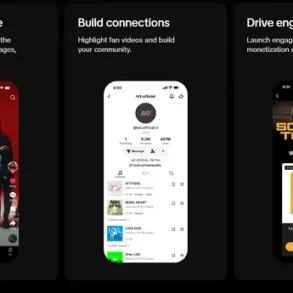On a chilly Tuesday morning, Amrita opened an email that would alter the course of her career. The subject line read, “Important Update Regarding Your Employment.” Her heart sank as she read the words confirming her worst fears—she had been laid off. Overwhelmed by a storm of emotions, she turned to social media to vent her frustration. Her post garnered sympathy and comments, but it also raised eyebrows, sparking questions about the best way to handle such news in a hyper-connected world.
Layoffs, though an unfortunate reality of modern corporate life, can be emotionally taxing. The impulse to seek solace on social media is natural, but is it wise? As Pradyumna Pandey, a seasoned HR leader, warns, “Your network is your net worth. Why jeopardise it with a public outburst?” In an age where online footprints define professional reputations, a hasty post can have long-lasting repercussions. Whether navigating personal setbacks or managing organisational change, thoughtful communication is critical.
The challenge lies in navigating these moments with tact, turning what feels like an ending into the start of something new.
“Your network is your net worth. Why jeopardise it with a public outburst?”
Pradyumna Pandey, senior HR leader
The perils of emotional outbursts
Layoffs are deeply personal, often leaving individuals feeling vulnerable and uncertain. Yet venting publicly on platforms such as LinkedIn or Twitter can do more harm than good. Ravi Kumar, Chief People Officer at Page Industries, advises restraint. “Maintain a professional tone in any social media post,” he says. Composure not only safeguards your professional image but also signals emotional intelligence—a trait employers value highly.
An impulsive, accusatory post may alienate your network and damage future prospects. Instead, opt for language that communicates your situation without casting blame. For example, instead of saying, “I was unfairly let go,” frame it positively: “Due to restructuring, I am exploring new opportunities and excited for what lies ahead.”
“Maintain a professional tone in any social media post.”
Ravi Kumar, Chief People Officer at Page Industries
The power of positivity
Professionalism in communication goes hand in hand with authenticity. Transparency fosters trust, but it’s important to strike a balance—sharing enough to humanise your story without oversharing. Contextualising the layoff briefly, such as attributing it to market conditions or organisational restructuring, can add clarity without negativity.
Moreover, expressing gratitude for the experiences and opportunities you’ve had showcases a forward-looking attitude. A thoughtful post might read:
“After five enriching years with XYZ, my role was recently impacted due to restructuring. I’m grateful for the skills I’ve gained and the incredible colleagues I’ve worked with. I’m now seeking new opportunities where I can bring my expertise to innovative teams.”
Such language frames the layoff as a professional milestone rather than a misfortune, highlighting resilience and adaptability.
Using social media to build, not burn
Handled thoughtfully, social media can transform a setback into a growth opportunity. It’s a platform to showcase skills, reconnect with your network, and express optimism about the future. Highlight achievements and express enthusiasm for the next chapter of your career.
For instance, an employee might write: “During my tenure at XYZ, I led projects that enhanced operational efficiency by 15 per cent. As I look ahead, I’m eager to contribute to organisations that value innovation and impact.”
Pandey emphasises the importance of gratitude. “Thanking mentors and colleagues reflects maturity and professionalism,” he says. This not only leaves a positive impression but also keeps bridges intact.
What to avoid
It’s tempting to vent frustrations online, but posts driven by anger or blame can backfire. Phrases such as, “Management was unfair,” or “This decision felt like a betrayal,” may alienate potential employers or professional connections. Platforms like Glassdoor, which allow anonymous feedback, are better outlets for airing grievances constructively.
Additionally, avoid naming specific individuals or disclosing sensitive information about your former employer. Public criticism or sharing confidential details could have legal repercussions and damage relationships with colleagues who might serve as valuable references or connections in the future.
Kumar underscores the importance of discretion: “Rather than pinpointing teams affected, acknowledge the broader context—such as market challenges or organisational realignments.” This approach maintains professionalism and avoids unnecessary tension.
Framing the future
A strong conclusion to a social media post can leave a lasting impression. End on an optimistic, forward-looking note that demonstrates resilience and enthusiasm. For instance: “While this chapter has come to an end, I’m excited about exploring opportunities in ABC industries. I look forward to contributing to dynamic teams and creating meaningful impact in my next role.”
By framing your narrative around growth and possibilities, you project strength and confidence—qualities that resonate with employers.
Lessons in emotional intelligence
Layoffs are more than personal—they ripple through families, communities, and the economy. Recognising this broader impact calls for sensitivity and understanding in your communication. Pandey’s succinct advice—”Don’t burn bridges”—captures the essence of how professionals should navigate such transitions.
Handled with grace, a layoff can become a stepping stone rather than a stumbling block. As Amrita learned, the digital world amplifies every word and action. Approach it thoughtfully, and even the most challenging moments can pave the way for new opportunities.
This post was originally published on this site be sure to check out more of their content








